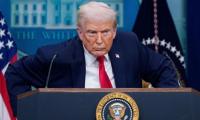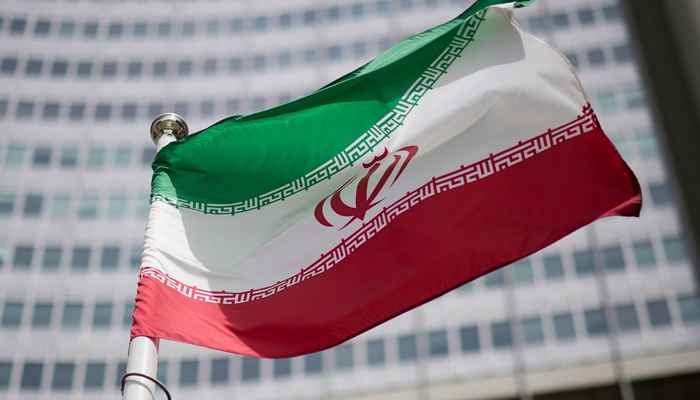Iran’s misery index
Iran’s oil production has declined significantly, dropping from a peak of 6 million barrels per day to a low of 500,000 barrels a day in 2020 and then rebounding to around a million barrels per day
Over the past decade, per capita income has come down from $8,525 to under $3,000. Over the past six years, the riyal has fallen from 40,000 riyals to-a-dollar to 488,000 to-a-dollar. The Iranian riyal is now the ‘weakest currency in the world.’ Last year, inflation had hit a high of 55 per cent which has since come down to 40 per cent. Iran’s Misery Index, a composite measure that combines unemployment and inflation rates, has risen to 60.4 percent, its highest point ever and more than double what it was six years ago.
Iran’s oil production has declined significantly, dropping from a peak of 6 million barrels per day to a low of 500,000 barrels a day in 2020 and then rebounding to around a million barrels per day. Throughout the past decade, merely 27.5 per cent of Iran’s population has been engaged in formal employment. Out of the total 88 million Iranians, a staggering 44 million now find themselves below the poverty line.
Bank Markazi, the Central Bank of Iran, is set to dissolve the financially troubled institutions, including Tosse-eh (Development) Credit Institution, Ayandeh (Future) Bank, Sarmayeh (Capital) Bank, Nour, and Caspian. The standard procedure dictates that when a financial institution faces insolvency, Bank Sepah, the official bank of Iran’s Revolutionary Guards (IRGC), assumes control of the affected entity.
In Iran, there are 18 contributory pension funds, such as the Civil Servants Pension Organization, the Social Security Organization, the Armed Forces Pension Fund, and the Rural and Nomads’ Pension Fund. Currently, nearly all of these pension funds are facing significant financial challenges. The 2022 Index rated Iran at 25 on a scale ranging from 0 (‘highly corrupt’) to 100 (‘very clean’), with the global average set at 43.
In 2024, following years of stagnation caused by sanctions and other factors, Iran’s GDP is expected to experience a 2.5 per cent growth. This modest recovery can be attributed to factors such as heightened activity in the oil sector, improvements in non-oil exports, and increased government spending. Although the inflation rate remains relatively high, it has come down from its recent peak of over 55 per cent. Notably, there has been a recent surge in foreign direct investment, particularly in sectors like oil, gas, and renewable energy.
To be certain, the intense rivalry between the IRGC and Artesh (the conventional military force) has resulted in numerous detrimental consequences for Iran. This rivalry has led to the politicization of the military, power struggles within the political sphere, internal instability, hindrances to regional cooperation, obstacles to reform and modernization efforts, as well as unnecessary duplication and wastage of resources.
The 2024 election cycle commenced in Iran a few months ago, with elections scheduled to be held on Friday, March 1. In the recent past, the government has increased investment in infrastructure projects, encompassing ports, railways, and power plants. This initiative is not only stimulating local economies and generating employment but also holds the promise of bolstering Iran’s long-term economic competitiveness.
The writer is a columnist based in Islamabad. He tweets/posts @saleemfarrukh and can be reached at: farrukh15@hotmail.com
-
 Rachel McAdams Becomes Object Of Jokes At Hollywood Star Of Fame Event
Rachel McAdams Becomes Object Of Jokes At Hollywood Star Of Fame Event -
 South Korea's Ex-PM Han Duck-soo Jailed For 23 Years Over Martial Law Crises
South Korea's Ex-PM Han Duck-soo Jailed For 23 Years Over Martial Law Crises -
 Global Markets On Edge Over Greenland Dispute: Is US Economic Leadership At Risk?
Global Markets On Edge Over Greenland Dispute: Is US Economic Leadership At Risk? -
 King, Queen Visit Deadly Train Crash Site
King, Queen Visit Deadly Train Crash Site -
 Oxford Research Warns ChatGPT Reflects Western Worldviews
Oxford Research Warns ChatGPT Reflects Western Worldviews -
 UK Inflation Unexpectedly Rises To 3.4% In December, The First Increase In Five Months
UK Inflation Unexpectedly Rises To 3.4% In December, The First Increase In Five Months -
 Meghan Markle Set To Take Big Decision On Returning To UK For Invictus Games
Meghan Markle Set To Take Big Decision On Returning To UK For Invictus Games -
 Prince Harry To Leave Britain One Day Earlier Than Expected For THIS Reason
Prince Harry To Leave Britain One Day Earlier Than Expected For THIS Reason -
 The Way You Consume Sugar Could Be Affecting Your Health
The Way You Consume Sugar Could Be Affecting Your Health -
 Brooklyn Beckham Gets Backing From Vanessa Marcil Amid Feud With Parents
Brooklyn Beckham Gets Backing From Vanessa Marcil Amid Feud With Parents -
 OpenAI Uses AI To Detect Under 18 Users On ChatGPT
OpenAI Uses AI To Detect Under 18 Users On ChatGPT -
 Philippines To Lift Ban On Grok AI After Musk's Platform Commits To Fix Safety Concerns
Philippines To Lift Ban On Grok AI After Musk's Platform Commits To Fix Safety Concerns -
 Trump Vows ‘no Going Back’ On Greenland Ahead Of Davos Visit
Trump Vows ‘no Going Back’ On Greenland Ahead Of Davos Visit -
 Alexander Skarsgard Breaks Silence On Rumors He Is Bisexual
Alexander Skarsgard Breaks Silence On Rumors He Is Bisexual -
 King Charles Faces Rift With Prince William Over Prince Harry’s Invictus Games
King Charles Faces Rift With Prince William Over Prince Harry’s Invictus Games -
 Elon Musk’s Critique On ChatGPT Safety Draws Sharp Response From Sam Altman
Elon Musk’s Critique On ChatGPT Safety Draws Sharp Response From Sam Altman




